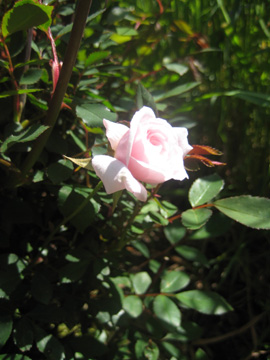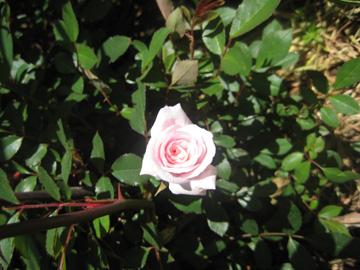Topic: Cyborg self - networked city
Coffee shops in the USA and Canada are a publicly-accessible distributed network of multipurpose spaces for meetings, entertainment, or work.
You can meet to discuss business transactions with clients and associates, review the current class assignment, or chew over family affairs. You can view a movie, surf the net, and watch the va-et-vient of people dashing in to buy beverages and more, including pre-dawn polished business people, 10am locals, casually dressed, and harried parents at 4pm. Many bring their portable office environment in the form of their laptop, or perhaps iPad too at this point, and get a good four hours of work done before rushing off somewhere.
A coffee shop is a comfortable space. Should Starbucks, Piets, or all the local coffee shops charge by the hour for use of the space, instead of for the coffee? What are they really selling? It isn’t coffee, exactly. Starbucks knows this: they are consciously creating the “third place”.
Bill Mitchell points out (in ME++, MIT Press 2003) that “As continuous fields of presence are overlaid on architectural and urban space, the ancient distinction between settlers and nomads… is eroding in subtle but important ways. In the emerging wireless era, our buildings and urban environments need fewer specialized spaces built around sites of accumulation and resource availability and more versatile, hospitable, accommodating spaces that simply attract occupation and can serve diverse purposes as required. A café table can serve as a library reading room. A quiet place under a tree can become a design studio. A subway car can become a place for watching movies...”
“Now, spatially dispersed yet coordinated, fluid collections of wirelessly interconnecting individuals – perhaps assembled, from the beginning, in cyberspace rather than at any physical location – are becoming a crucial fact of urban life.”
"For architects, continuous fields of presence and the destabilization of person-to-place relationships demand some radical rethinking of the fundamentals. The standard procedure of twentieth-century modernism was to start by distinguishing and separating functions – the better to optimize spaces for particular functions and to announce those functions visually… At an urban scale, housing areas were to be distinguished from industrial and commercial zones. At building scale, there were to be specialized spaces, with associated equipment, for the activities that were to be accommodated. And the physical fabric of a building was to be articulated functionally – for example, by separating the supporting and enclosing functions of a wall by substituting columns for support and a nonbearing curtain wall for enclosure. But this strategy makes little sense when wireless electronic devices can support many different activities an a single location or the same activity at many different locations, and when running different software can radically alter the functions provided by a device without changing its format all. Time division multiplexing of activities is starting to look smarter than space division.” p 159-162Although a coffee shop may be an archetype of flexible space, many activities are still dependent on specialized equipment, specialized supply of energy, availability of resources, or topography and other specific character of the landscape, and therefore are still very place and program-based. Examples: steel mill, surgery operating room, quarry, harbour. Even for these, however, the specific location and configuration of programmed spaces for such activities is more flexible than might have been in the past because transportation and communications technology permit flexibility in site selection – yet as an investment is made in one site, the specific locus of the activities becomes fixed at that site.
As an example, the very high tech and very high security Santa Clara Crime Lab for which I was landscape Project Manager 2003-7 required a location in Santa Clara County, California. Three alternative sites within the county offering different opportunities were considered. When a site was chosen, we worked closely with the design architect to consider alternative site dispositions for the building, and subsequently alternative building-site configurations to express but control public access, regulate secure parking, incorporate fortresslike security devices, not to mention achieve LEED certification. At each stage more and more investment in the specific site was made.

 At long last the heritage rose in Tennessee Valley has bloomed, has not been eaten by a deer, and I was there with a camera. Here are pics. Very powerful and lush
At long last the heritage rose in Tennessee Valley has bloomed, has not been eaten by a deer, and I was there with a camera. Here are pics. Very powerful and lush  fragrance. Overall about 3cm / little over an inch.
fragrance. Overall about 3cm / little over an inch. 